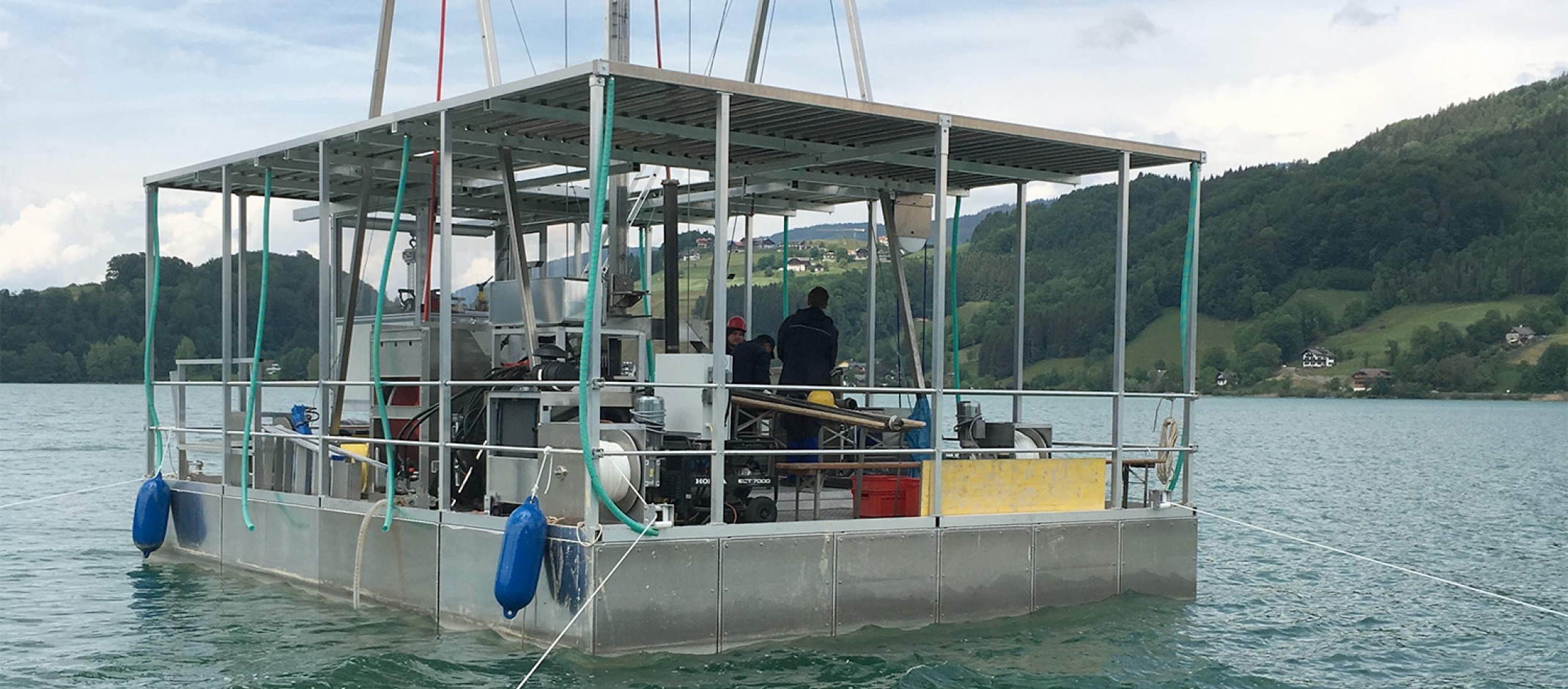Bringing clues from the ice ages to light

Scientific research has many faces. For an international research team from Germany, Austria and Switzerland, it is a journey into both the depths of Lake Constance and the distant past: What was life like in and around Lake Constance during and since the last ice age? Which biological communities can be identified on the basis of the genetic material found in the sedimentary deposits of the lake bed? What do these residues reveal about the effects of past climate change on local species and populations? And which communities of microorganism are still active in such old sediment layers?
Two biologists from the University of Konstanz, Professor Laura Epp from the Limnological Institute and Dr David Schleheck (Privatdozent) from the Department of Biology are working on finding answers to these questions as part of an international research project involving geologists and geochemists led by Professor Antje Schwalb from the Institute of Geosystems and Bioindication at the Technische Universität Braunschweig. In order to recover core samples from the lake bed and then carry out geological, geochemical and biological analyses of their contents, the researchers are utilizing the state-of-the-art and specially developed sampling system “Direct Push”, which can penetrate up to 100 metres deep into the sediment of the lake floor at a depth of 200 metres. The aim of the project is develop a historical overview of the Lake Constance region’s climate and environment as well as their effects on the lake ecosystem.
“Direct Push” is installed on and operated from a platform measuring six by eight meters that is moored about two kilometres south of Hagnau in Lake Constance. The system consists of a piston core barrel driven by a down-the-hole-hammer, which together comprise technological advancements from the mining and foundation engineering sectors. It allows the researchers to carefully recover the core samples, keeping the fine stratification of the sediment sample intact. The proposal for “Direct Push” was submitted jointly by the Technische Universität Braunschweig and the Bochum University of Applied Sciences with the support of the Deutsche Forschungsbohrkonsortium (GESEP) e.V and funded by the German Research Foundation (DFG) with EUR 1.1 million between 2016 and 2018. The system was built by the Austrian company UWITEC. Further project partners include the Institut für Seenforschung der Landesanstalt für Umwelt Baden-Württemberg, the Helmholtz Centre Potsdam - German Research Centre for Geosciences, the Leibniz Institute for Applied Geophysics in Hanover, the Leibniz Institute for Baltic Sea Research Warnemünde and the University of Bern.
Due to its small size, the "Direct Push" platform can be transported in a few containers and set up without cranes. Once it completes its work on Lake Constance, it can be used for other national and international research projects in remote and difficult to access areas around the world. The project is expected to be completed by 1 July 2019.
Please note: This page will be filled with more multimedia content in the coming days and weeks. So feel free to stop by again!
